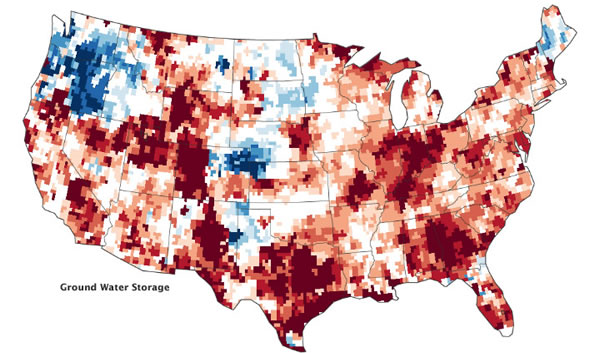When most people think of drought, they probably think of dead and dry
vegetation - you know, things that are above ground. But data from the
twin NASA satellites of the Gravity Recovery and Climate Experiment (GRACE)
show that the drought is also underground (plus it's very interesting
to see how they could "see" groundwater from space):
The maps do not attempt to represent human consumption of water; but
rather, they show changes in water storage related to weather, climate,
and seasonal patterns.
“GRACE gives you variations in the total water stored on and
in the land,” says NASA scientist Matt Rodell in a recent feature
story on the Earth Observatory. GRACE does not measure the water directly,
but instead detects changes in Earth’s gravity. When the satellites
encounter a change in the distribution of Earth’s mass—such
as a blanket of fresh snow on California’s Sierra Nevada—they
are pulled toward the mountains a tiny bit more than normal. By tracking
trends in how the satellite orbits change, researchers can calculate
how gravity is changing on Earth. So when groundwater supplies dwindled
in the United States in 2011 and 2012, that region of the planet had
a little less mass and gravitational pull. The satellite orbits moved
a bit in response, allowing GRACE to reveal the change in groundwater
storage.


No comments:
Post a Comment